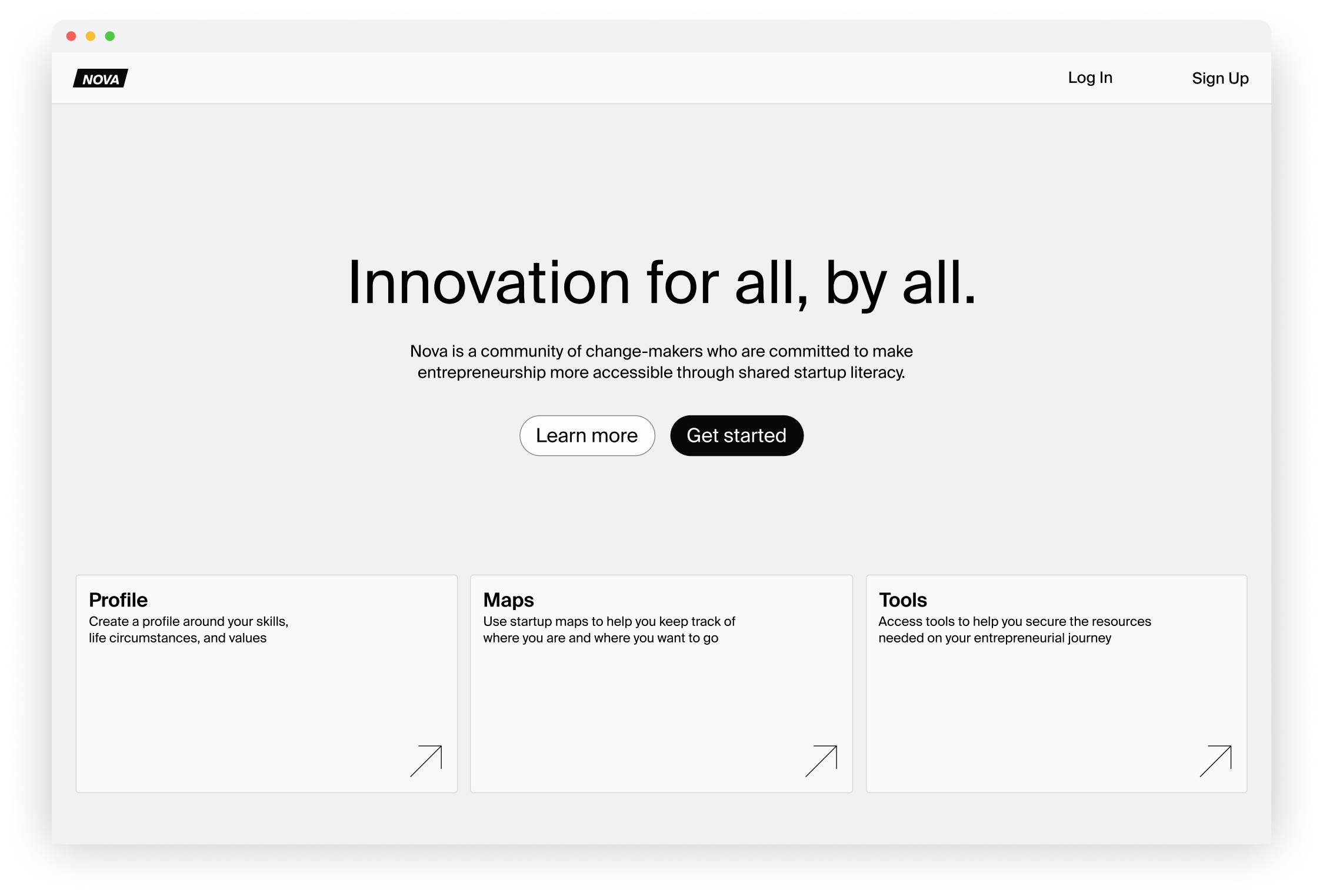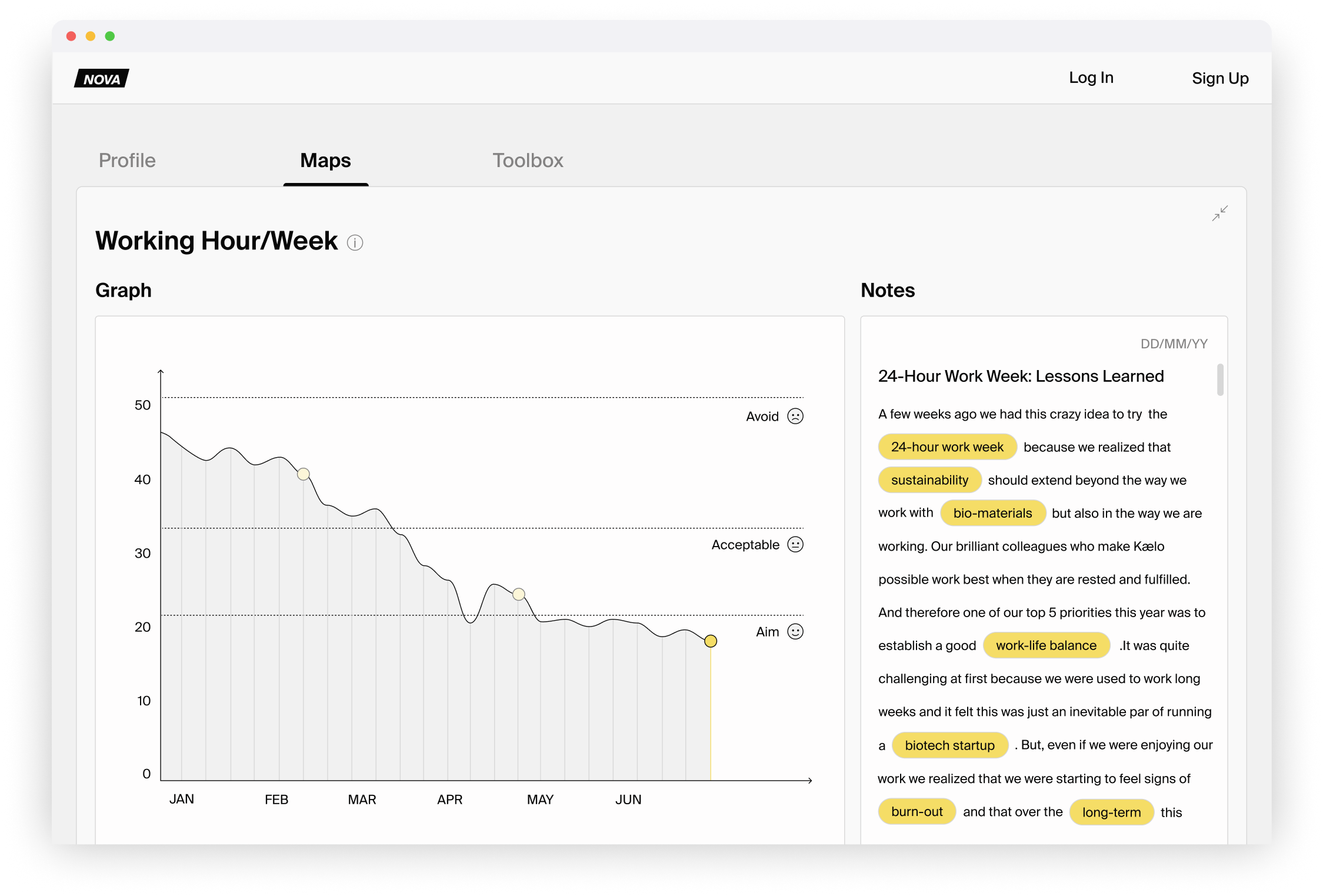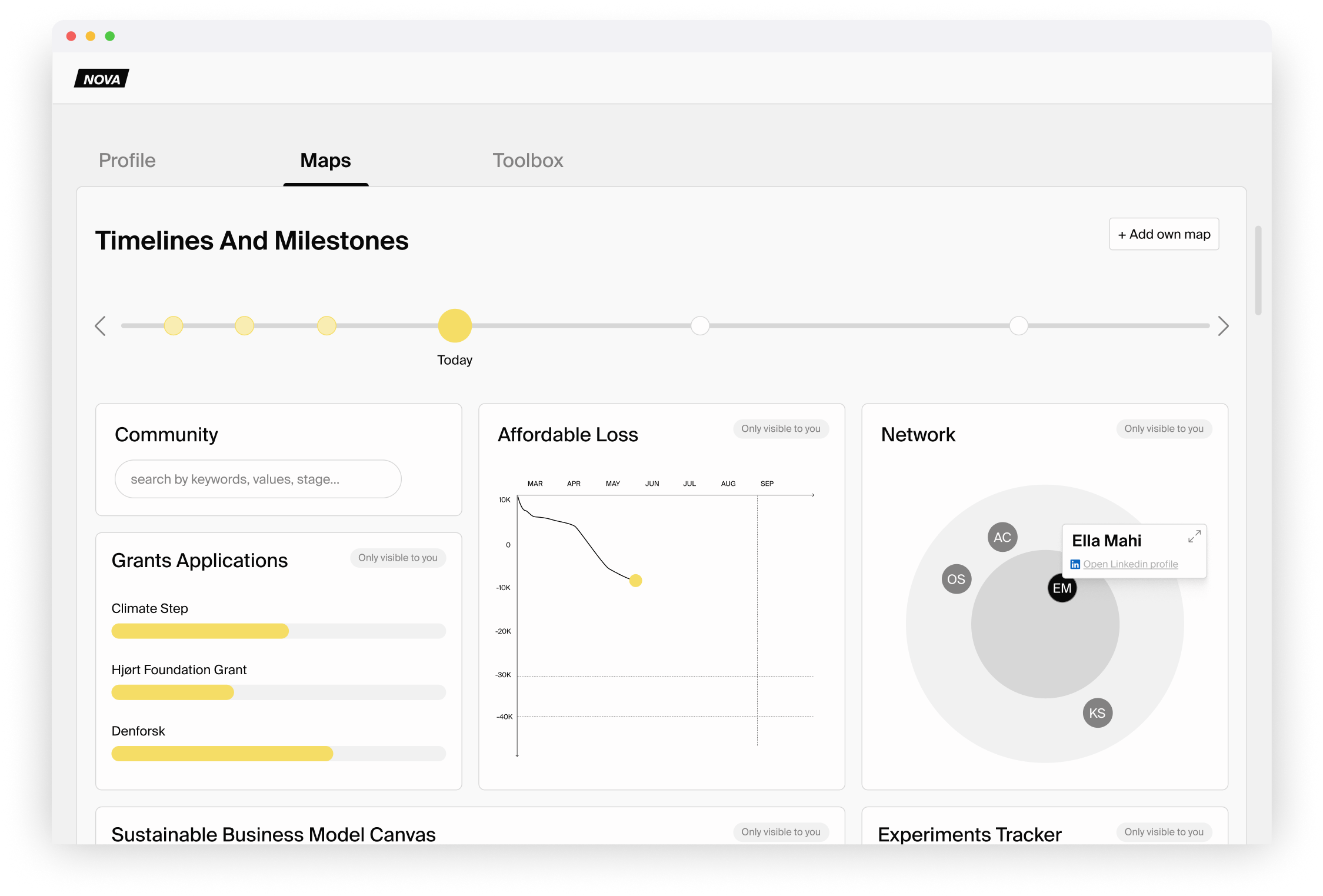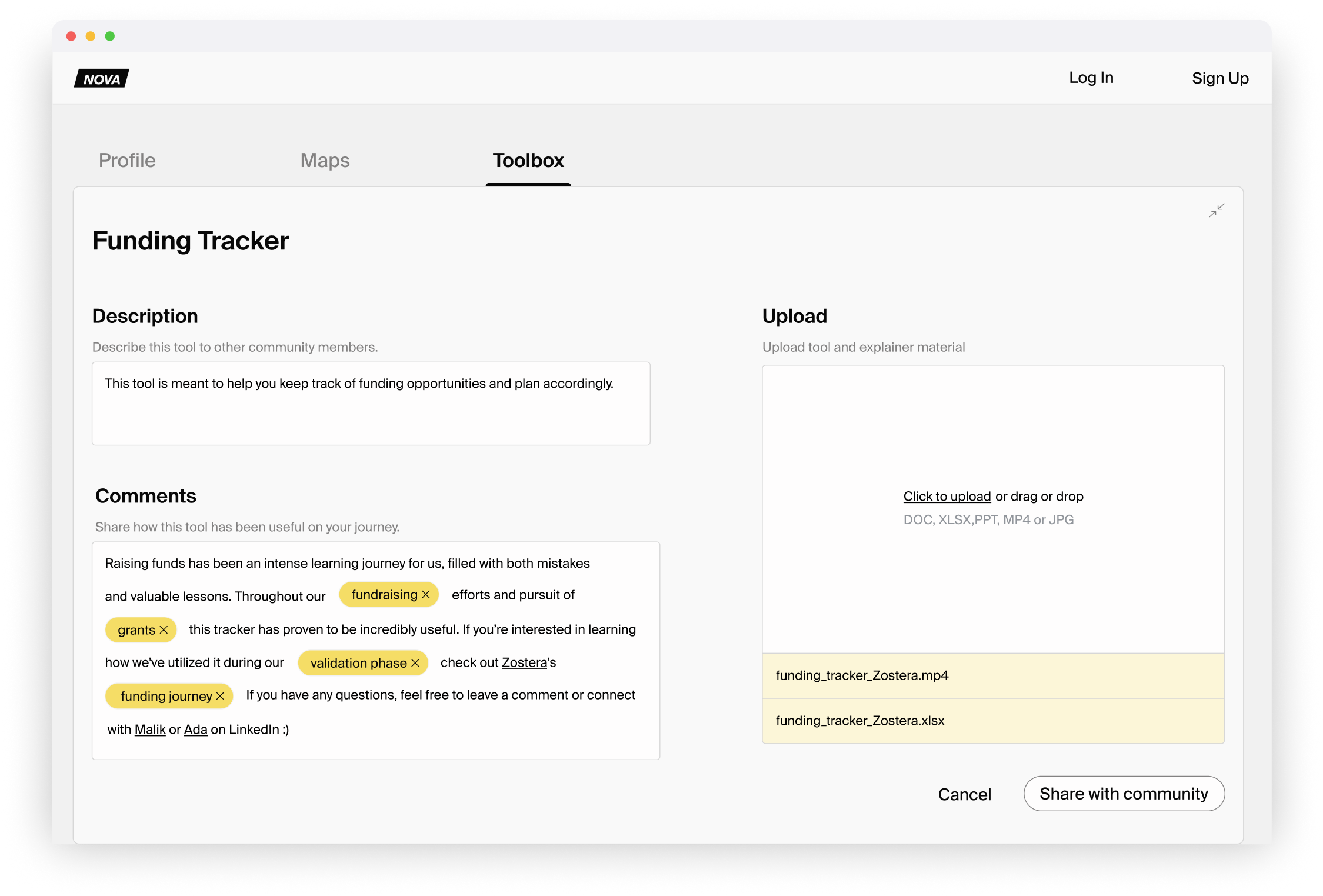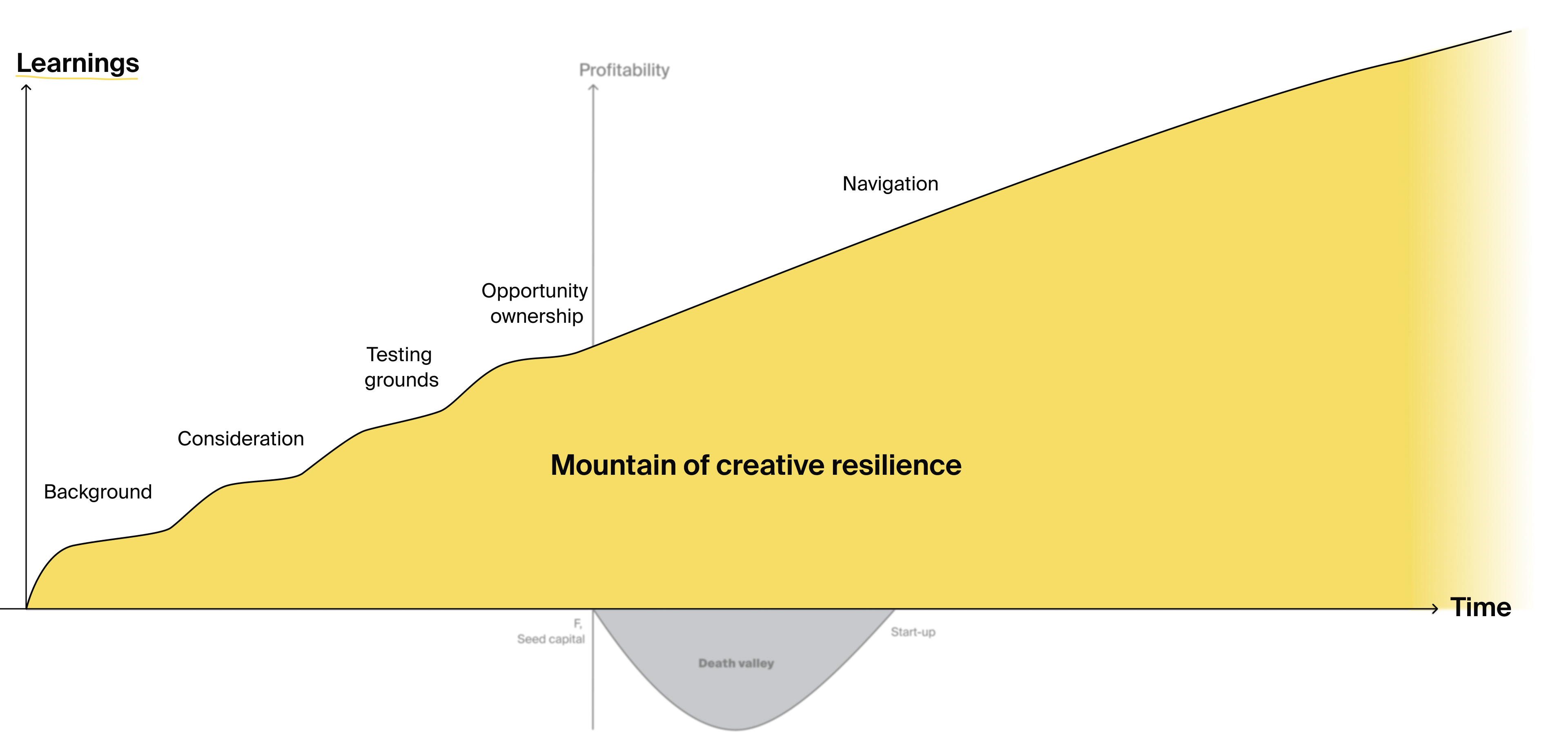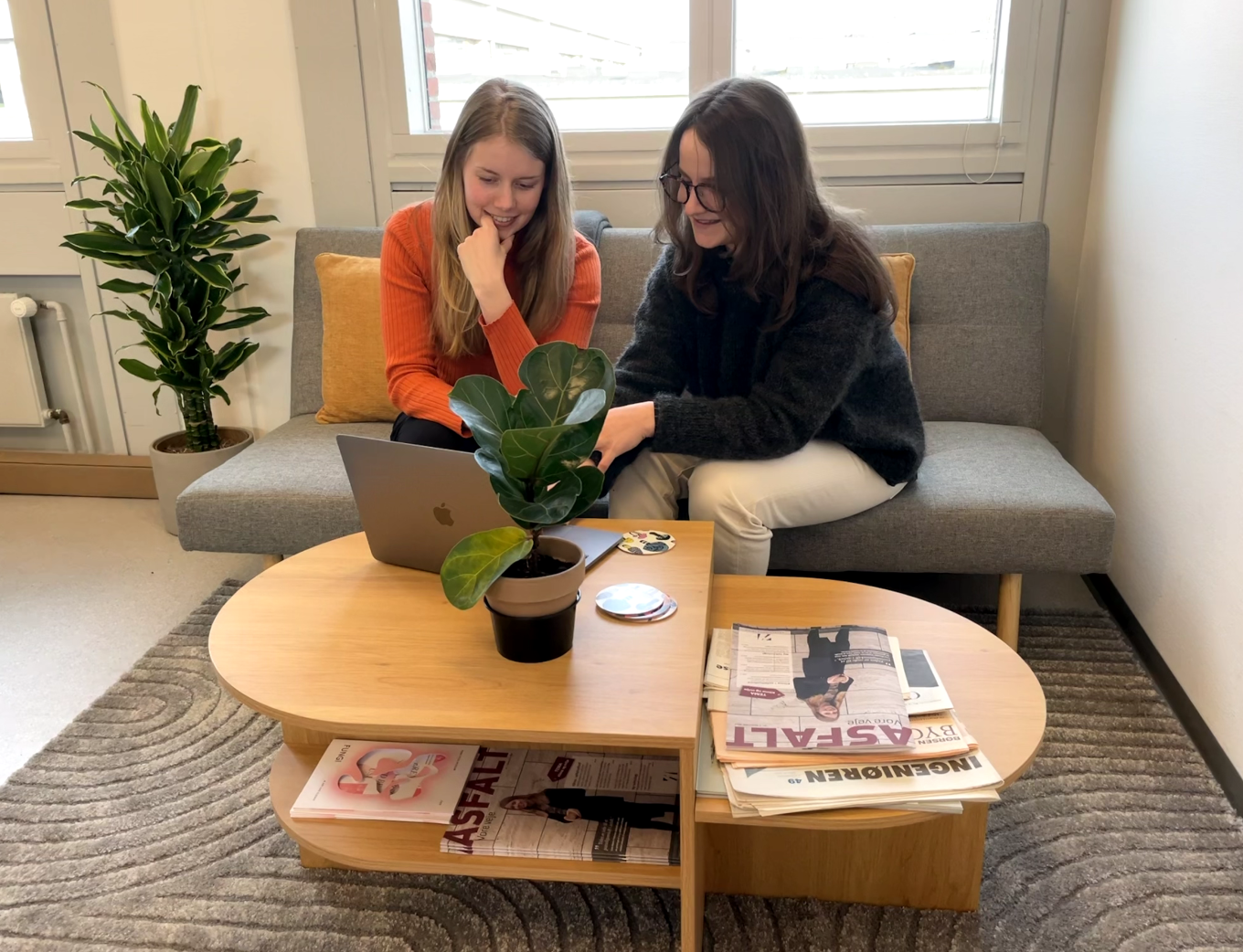
Startup Literacy
Master thesis exploring ways to make startup literacy more accessible and actionable for first-time underrepresented founders.
About
This project grew from my deep interest in how innovation is created and delivered to people. This led me to explore the topic of startup entrepreneurship, and inspired by the journey of a close friend who is a founder, I chose to focus on how underrepresented entrepreneurs, especially women, can be better supported in entering and navigating the startup world. The project consists of a written thesis based on qualitative research and a UX concept that explored this topic through the lens of interaction design.


